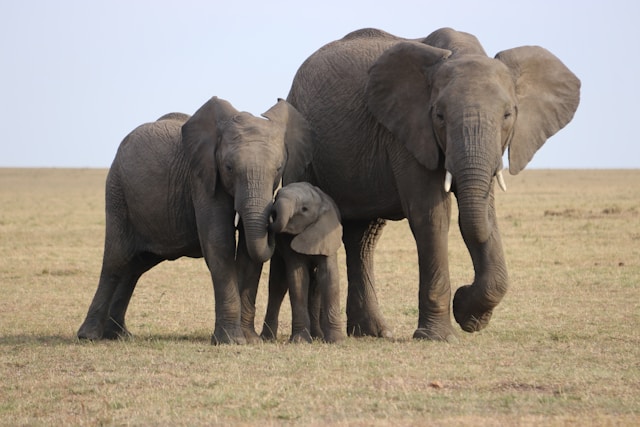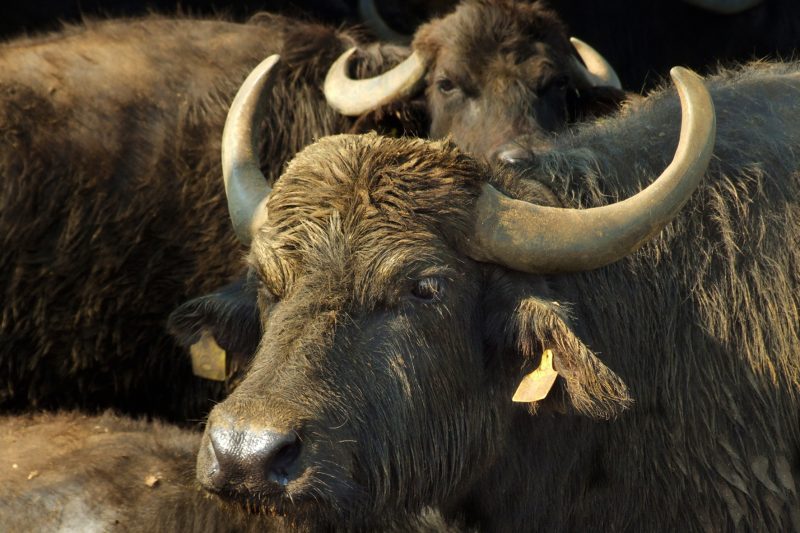Hippopotamus Is Kenya’s Only Aquatic Herbivore
Red sweat discharge
Hippos prefer areas with shallow waters so that they can sleep half-submerged in the water. They are often seen lying in the waters of lakes, swamps, and rivers next to grasslands. While basking in the sun, they lose water rapidly through the skin making them dehydrated. Therefore, when they are on the shoreline, they are often seen retreating to the water to cool off through periodic dips. Hippos do not sweat. Instead, their skin glands release an oily pinkish or reddish substance, which acts as a skin moistener and sunblock by filtering out ultraviolet radiation, also protecting against germs. This lotion-like liquid that oozes out of their skin gives rise to the age-old legend that they sweat blood.
Red-eye travel
Heavy grazing and trampling near the river, denudes large areas of all grass, which leads to soil erosion. When the sun sets, hippopotamuses come out of the water and travel overland to browse and feed on soft, short grasses and fallen fruit. But if they find anything threatening on land, they run for the water, even matching a human’s speed. In times of famine or drought, they may embark on migrations looking for water. They travel along single-file pathways that are familiar to them as far as 10 km in one night to consume 80 pounds of grass for about five hours. Hippos recognize individuals by the scent that they use during night treks to follow each other nose-to-tail. Territorial and subordinate males make dung piles along pathways, which function as olfactory signposts. Sometimes, the exodus results in many deaths.
Reproduction life cycle
In the wild, the females of hippos become sexually mature between the age of 7 and 15. Males mature slightly earlier than cows, between the age of 6 and 13. However, in captivity members of both sexes become sexually mature as early as 3 and 4.
Aggressive mating ritual
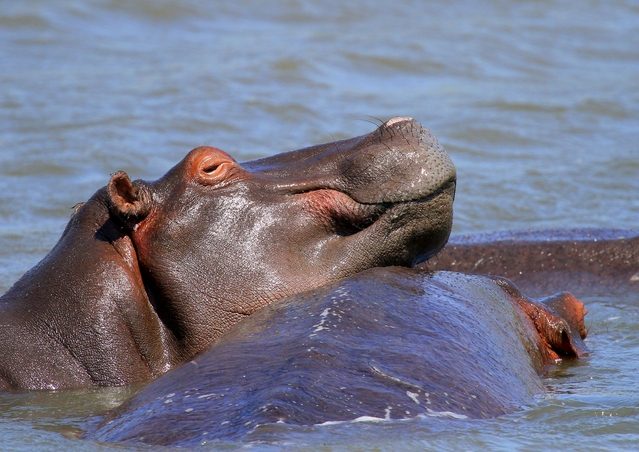
Hippopotamus
Dominant bulls older than 20 years initiate the mating. Bulls monopolize areas around the river as mating territories. Subordinate males are only tolerated in the area if they do not try to breed. Cows aggregate during the dry season when most mating takes place. The way the hippos show aggression during the breeding season is quite hilarious. Territorial bulls stare at each other, then with their rear end sticking out of the water, flip urine and feces in a full arc by wagging the tail. This routine indicates that it is an occupied territory. Most of the aggression of the opponents is noise, splash, a yawning display, and bluff charges. But when they engage in combat, they slash each other upward with the lower incisors. Wounds can be deadly despite the thick skin there. Thankfully, these battles are sporadic, only erupting when strangers invade territories during the mating season.
Calf to giant
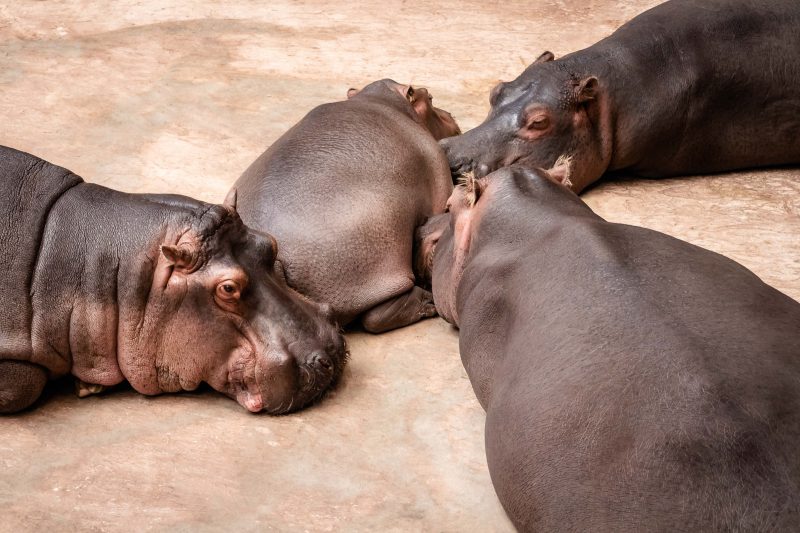
The just-born hippo is considerably massive
Unlike other herbivores in Kenya, fertilization results in each female hippopotamus giving birth to just one calf after a gestation period of eight months once every two years even though it mates throughout the year. The just-born hippo is considerably massive, weighing around a solid 100 pounds or 45 kg right at birth. It weans at six to eight months and begins to eat grass impressively as early as when it is one month old. The calf sometimes struggles to climb onto the mother hippo’s back to rest and to remain above the water. But the calves can also suckle underwater or on land by keeping their nose, eyes and ears closed. It is an endearing sight to watch the calf, soon after its birth, close its nostrils and ears to nurse underwater.
Weird culinary etiquette
The mouth is a meter wide, and the lower canines are sharp, exceeding 30 cm in length, which aids while grazing in the savannas of Kenya. The long incisors and canines are used strictly as weapons when eating vegetation and small plants. While browsing the grasslands, it is fascinating to watch them grasp the grass with the full lips and jerk the head. They do not chew the cud but, through a fermentation process, extracts protein by retaining the food in the stomach for a long time. Their digestive process expels enormous quantities of nutrients into the rivers and lakes thereby supporting the fishes of Kenya that are crucial as a protein source in local people’s diet.
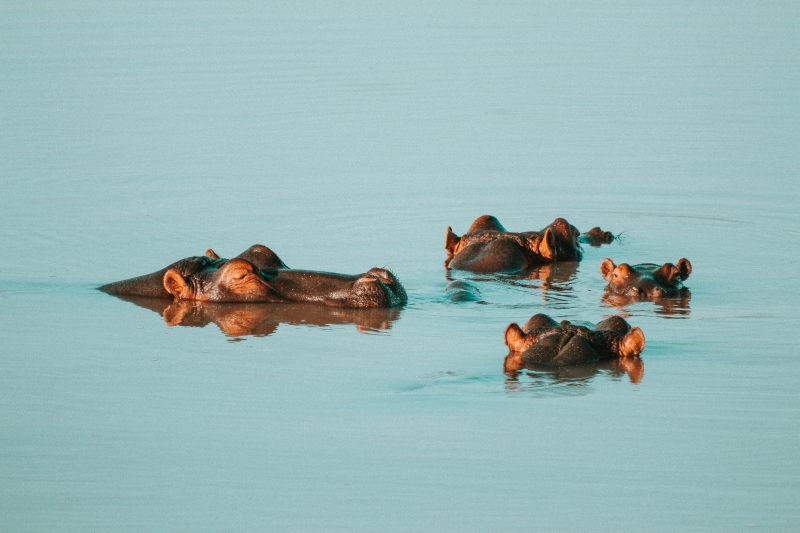
The lifestyle of a hippopotamus centers around the water
The lifestyle of a hippopotamus centers around the water. It must have regular dips in the pool. Nature also provides them with a self-producing lotion that keeps their skin moisturized because their skin gets dry easily even after little exposure to the sun. They also travel communally in search of water during the dry season. Hippos also give back to the society by ejecting the minerals from their bodies so that fishes can survive abundantly.
5 Frequently Asked Questions About Hippopotamus
To receive a colourful digibook about animals with videos, images and text, please fill out the following form or simply email us on safaris@safari-center.com


